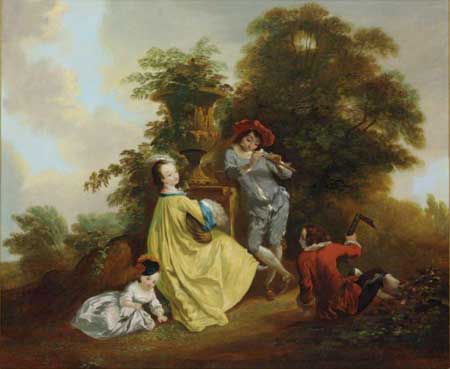
- Home Page
- Accepted
Paintings & Copies - Doubtful
Attributions - Doubtful Textual References
- Alternative
Titles - Collectors &
Museums - Bibliography
- Search Abecedario
- Watteau &
His Circle
X. Fête galante
Entered October 2017
Whereabouts unknown
Oil on canvas
63.5 x 76 cm
ALTERNATE TITLES
Elegant Figures Making Music in a Landscape
Three Musicians with Audience
PROVENANCE
London, with W. H. Patterson.
London, Christie’s South Kensington, April 14, 1999, lot 262: “MANNER OF NICOLAS LANCRET / A Fête Galante / oil on canvas / 25 x 30 in. (63.6 x 76.6 cm.) / PROVENANCE / with W. H. Patterson, London (according to a label on the reverse). £1,500-2,500 €2,300-3,700.”
London, Christie’s, December 4, 2014, lot 7: “MANNER OF NICOLAS LANCRET / Elegant Figures making music in a landscape / oil on canvas / 25 x 30 in. (63.5 x 76 cm.) / £1,500-2,500 $2,500-4,000 / €1,900-3,200 / PROVENANCE / with W. H. Patterson, London (according to a label on the reverse). Anonymous sale, Christie’s, London, 14 April 1999, lot 262.”
Austin, Texas, Austin Auction Gallery, August 27, 2017, lot 953: “SCHOOL OF J. A. WATTEAU / Framed oil painting on canvas. Three Musicians with Audience, tag at lower center of frame reading ‘French School of J.A Watteau’ (Jean–Antoine Watteau, France, Netherlands, 1684-1721), relined, craquelure, sight: 24.5”h, 29.5”w, overall: 31”h, 36”w, 13.75lbs Start Price: $500.00.”
REMARKS
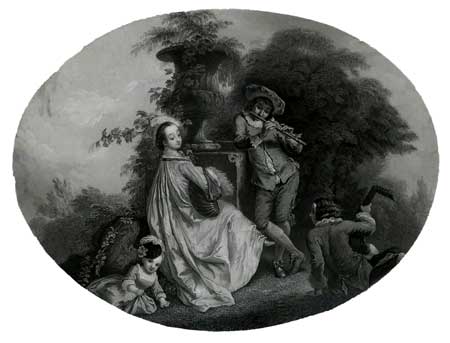
Unidentified artist, Elegant Figures Music-Making in a Landscape, oil on panel, 49.5 x 63.5 cm. Whereabouts unknown.
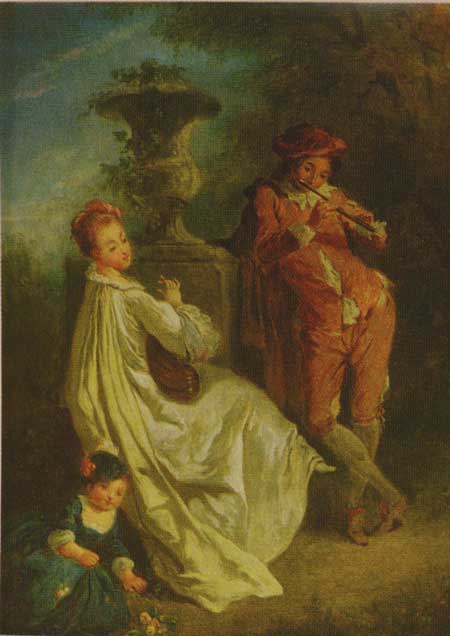
Unidentified artist, A Couple and a Child Making Music, oil on canvas, 41.1 x 32.1 cm. Whereabouts unknown.
This picture is one of three with essentially the same composition. The major difference among them is their format: this is a horizontal rectangle while the second is a horizontal oval, and the third is an upright rectangle. Also, the latter work lacks the recumbent guitarist at the right. All three may be by the same pasticheur, possibly working in the early or mid-nineteenth century.
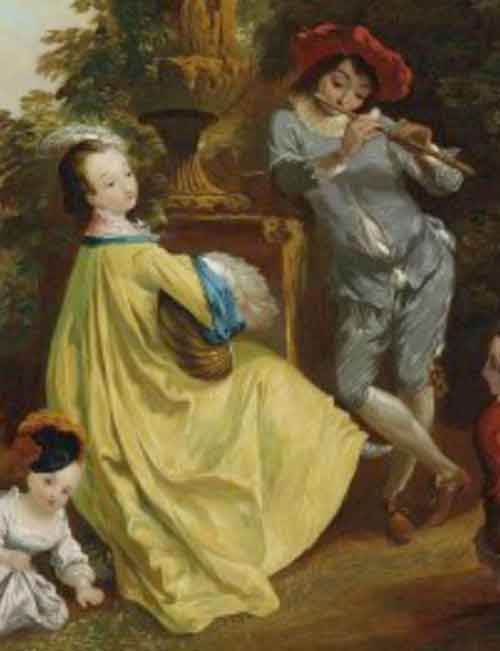
Anonymous artist, Fête galante (detail).
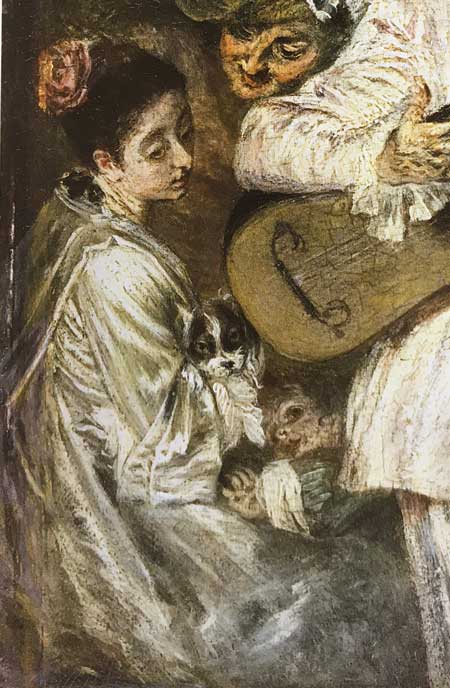
Watteau, Sous un habit de Mezetin (detail), Wallace Collection, London.
It could be argued that the woman’s pose, her turned head peering over her shoulder, is derived from the woman in Sous un habit de Mezetin but, even if so, this composition reveals the difference between the model and the copy. Watteau’s posture conveys a sense of gentle repose, whereas the copyist has created a mannerist tension between the body’s turn forward and the upraised arm and leg.
Likewise, the flutist’s exaggerated hipshot pose has no analogies in Watteau’s oeuvre. The crossed legs are a classical formulation that can be traced to the famed sculpture of Pothos, but it is generally not employed by Watteau or his school.
The nameplate on the frame is perhaps a good indication of the painting’s earlier provenance. As it is written in English, the picture must have been in Great Britain. Indeed, its earliest provenance is the London art trade, as indicated by the Patterson firm’s paper label on the reverse side of the frame. One can well imagine that this painting appeared under Watteau’s name in the many nineteenth-century sales, concealed by vague titles and descriptions. The relatively recent attribution to the “manner of Lancret” in 1999 and 2014 is only a minor exception to the evidently older attribution to Watteau.
